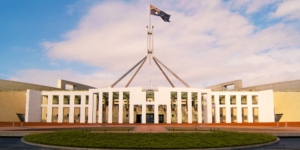Victoria will hold a state election on Saturday, 26 November (three weeks from today).
Labor’s Daniel Andrews is seeking a third term as Premier. His opponent is Liberal leader Matthew Guy.
A number of Greens and independent candidates are expected to be competitive in seats across the state.
Here’s what you need to know.
The logistics
You have until this Tuesday to enrol to vote if it’s your first time, or to check your address is up to date.
To check all of those details, head to the Victorian Electoral Commission website (vec.vic.gov.au), where you can also check what electorate you’re in.
Voting is compulsory. You’ll be able to vote early from next Monday (14 November). You can already apply to vote by post.
How to vote
Just like in the Federal Election earlier this year, you have two votes.
First, you’ll elect a local representative to sit in the Victorian Legislative Assembly (like the House of Reps). You must rank every candidate in order of preference – the order you choose matters, not just whoever you choose first.
Second, you’ll elect five people to sit in the Legislative Council (like the Senate). You can pick just one party and let that party decide where your preferences will go, or you can vote for individual candidates (at least five).
Where things stand
Statewide polling suggests Labor is comfortably ahead of the Liberals, but it’s not easy to predict how this will transfer to the results in individual seats.
A big unknown is how voters will judge Andrews’ record during the pandemic. Victoria’s lockdown policies had strong support, but there is some evidence of pockets of anger among economically disadvantaged voters in traditional Labor areas, such as Melbourne’s west and outer southeast.
The Liberals hope to win seats there, as do independent and minor party candidates running ‘anti-Dan’ platforms.
At the same time, the Greens are hoping to replicate their success at the Federal Election, where they picked up three seats in Queensland.
Their main targets are the Labor-held inner-city seats of Richmond, Albert Park, and Northcote. Richmond and Albert Park have long-serving MPs retiring.
There are also a number of ‘teal’ independents running similar campaigns to successful Federal independents. They are targeting Liberal and Labor seats in wealthy areas, including Hawthorn and Kew.
Infrastructure
Infrastructure is one of the big election issues. Labor has a number of major rail projects in the pipeline: completion of the new city loop, an airport rail link, a train line running through the suburbs, and the removal of more level crossings.
The Coalition wants to stop the suburban rail link and “audit” all other projects to assess value for money. Its own infrastructure promises are primarily focused on building new roads.
The Greens are calling for billions to be spent on new bike “superhighways”.
Integrity
Earlier this year, Victoria’s independent anti-corruption body reported former Labor ministers had engaged in corrupt conduct. Andrews was not directly implicated, but the report found evidence of a widespread culture of improper behaviour. Labor accepted the report’s recommendations.
Liberal leader Matthew Guy has previously attracted controversy, including for meeting suspected organised crime figures. His chief of staff resigned in August over allegations he accepted illegal donations. The Coalition has promised additional funding for the anti-corruption body.
Other issues
Health: Both major parties are promising to build and upgrade hospitals, and to hire or train more healthcare workers. The Coalition blames the Government for long waits for elective surgery and ambulances, and has promised a Royal Commission into the COVID response.
Housing: Labor has promised to build 12,000 social housing homes. The Greens are calling for more than 100,000 homes to be built.
Transport: The Coalition are promising $2 a day public transport fees. Labor have promised cheaper regional fares.
Climate change: Labor is targeting net zero emissions in the state by 2045, the Coalition by 2050, and the Greens by 2030. Labor is planning to develop government-owned renewable power generation. The Coalition is subsidising solar installations and calling for greater short-term gas supply.
Treaty: Labor has established an authority to begin a process for a First Nations Treaty, which would be the first in Australia. The Coalition supports the move.
Tax: The Coalition wants to cut a range of taxes and also place limits on Government debt.



